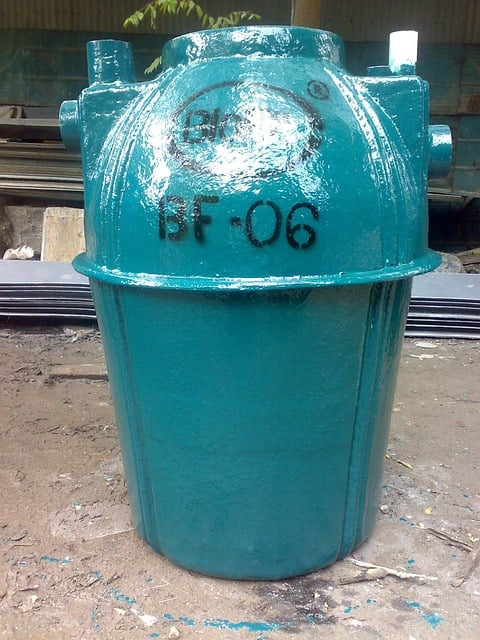Common septic system issues include clogs, sludge buildup, leaks, foul odors, frequent backups, and changing water levels. Regular maintenance is key to preventing these problems, but immediate professional help is required for persistent bad odors, clogs, or water backing up, as well as sudden changes in water levels or visible leaks. Annual inspections and expert assessments are crucial for large properties or high-flow fixtures, extending tank life, and avoiding costly repairs. Preventive measures include avoiding non-biodegradable materials, efficient water use, and regular drainfield inspection.
“Maintaining a healthy septic system is crucial for any property owner. However, recognizing warning signs of potential issues is essential to avoid costly repairs. This article guides you through the common problems that might indicate a need for professional intervention.
From identifying blockages and leaks to understanding when routine maintenance isn’t enough, we equip you with knowledge. We’ll explore red flags, emphasizing the importance of regular inspections for preventive care. By understanding these signs, you can ensure your septic system’s longevity and stability.”
- Common Septic System Issues: What to Look Out For
- When Routine Maintenance Isn't Enough: Red Flags Requiring Professional Intervention
- Preventive Measures and the Role of Regular Inspection in Avoiding Costly Repairs
Common Septic System Issues: What to Look Out For

Common Septic System Issues: What to Look Out For
Over time, even well-maintained septic systems can develop issues. One of the most frequent problems is clogs caused by debris, grease, or tree roots infiltrating the pipes. This can lead to slow drains and a gurgling sound coming from your plumbing fixtures. Another common issue is a buildup of sludge in the tank, which reduces its efficiency and can result in overflows. Leaks are also a significant concern, as they not only waste water but can contaminate groundwater with untreated sewage.
Additionally, you might notice a foul odor emanating from your property, especially around the septic tank area, indicating a potential problem. If you experience frequent backups or have noticed changes in the water level inside the tank, it’s crucial to pay attention to these warning signs. Regular septic system maintenance is key to preventing these issues, but being vigilant and addressing problems promptly can also save you from costly repairs and health hazards associated with faulty septic systems.
When Routine Maintenance Isn't Enough: Red Flags Requiring Professional Intervention

While regular septic system maintenance is crucial for optimal performance, there are signs that indicate routine care may not be enough. Red flags like persistent bad odors, clogs that won’t clear, or water backing up into sinks and toilets demand immediate attention. These issues could point to serious problems within your septic system, such as collapse, damage, or clogging.
Professional intervention is necessary when you notice sudden changes in water levels in the tank, visible leaks, or pools of water surrounding the septic tank. If your septic system serves a large property or high-flow fixtures are present, professional assessment becomes even more critical. They have the expertise and tools to diagnose complex issues, ensuring long-term health and efficiency for your septic system.
Preventive Measures and the Role of Regular Inspection in Avoiding Costly Repairs

Regular septic system maintenance and inspections are key to preventing costly repairs and ensuring your septic tank’s longevity. It’s recommended to schedule professional assessments at least once a year, as these experts can identify potential issues before they become major problems. During these inspections, professionals check for any signs of damage, leaks, or blockages in the tank and pipes, clean or pump out the tank as needed, and assess overall functionality.
Additionally, homeowners should implement preventive measures like avoiding flushing non-biodegradable materials (like wipes or plastics), using water efficiently to reduce overflow risks, and regularly inspecting and cleaning drainfields to maintain optimal performance. Taking these proactive steps can save you from unexpected septic system failures and keep your costs under control.
Understanding the warning signs of septic system issues is crucial for maintaining a healthy, efficient, and cost-effective sewage management system. While regular maintenance plays a vital role in preventing common problems, there are red flags that require professional intervention. By being vigilant and proactive, homeowners can avoid costly repairs and ensure their septic system’s longevity. Regular inspections and timely calls to experts specializing in septic system maintenance can prevent minor issues from becoming major crises.
